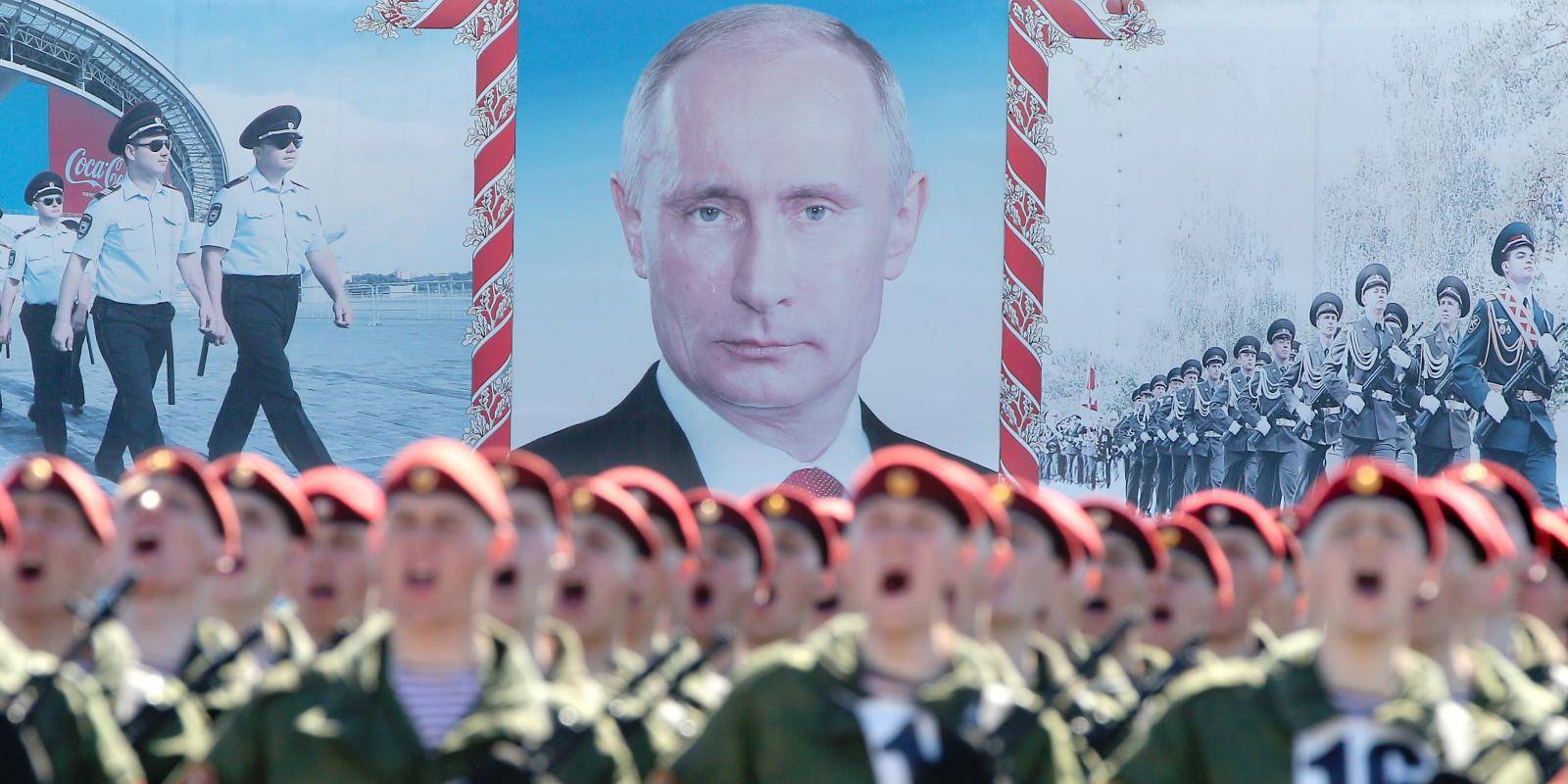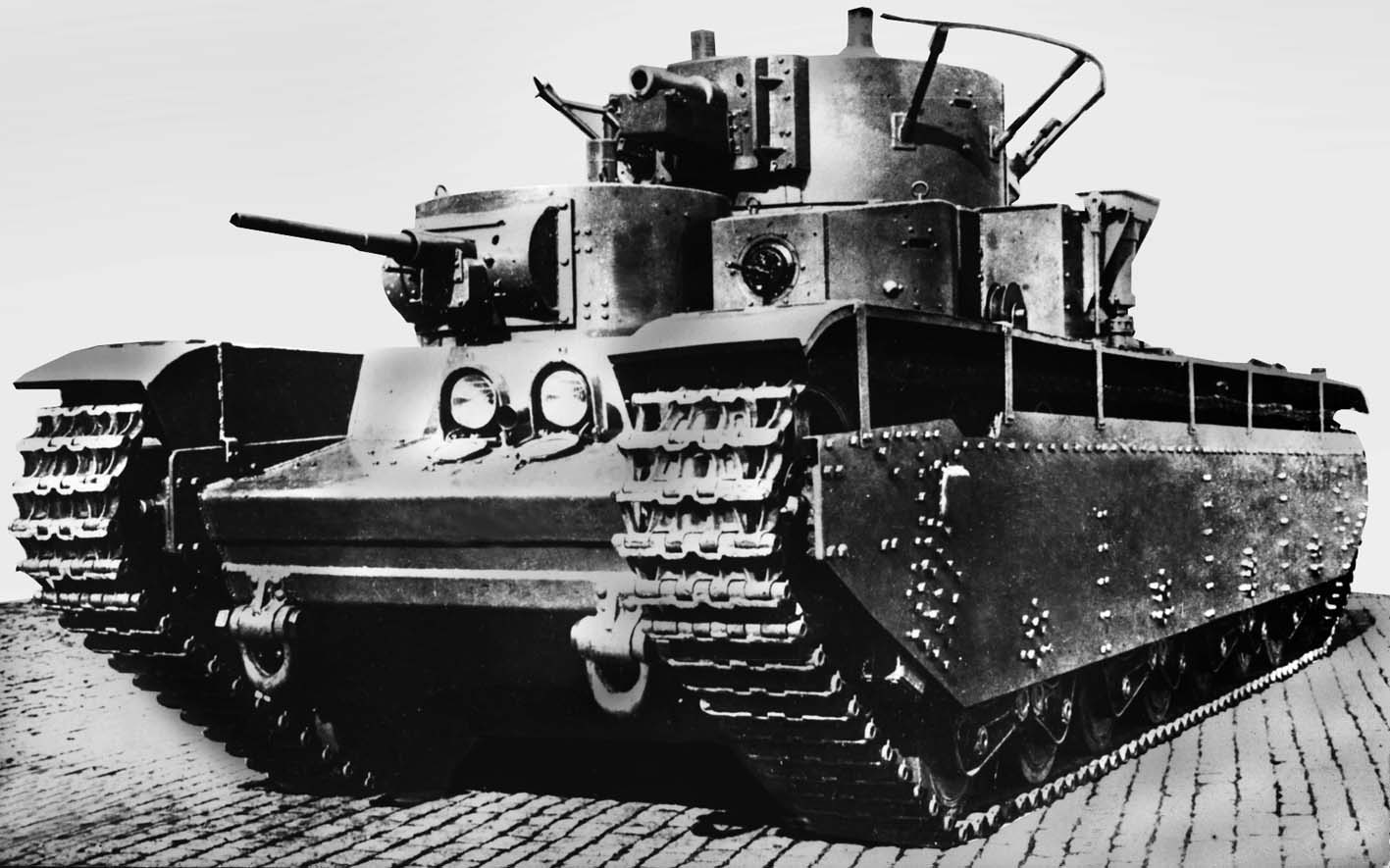Russian Tank History - Find out how these machines evolved from steel-plated machine guns to the most powerful infantry weapons on the battlefield.
The first fighting machines, later known as "tanks", appeared in 1914 after the start of the First World War.
Russian Tank History

These were mostly lightly armored machine guns with tracks that could easily pierce bullets and/or shrapnel.
How The Germans Made Use Of The Soviet Union's Best Tank
Russia also had a prototype of the first tank. It was called Vezdekhodi, which literally means "anywhere" in Russian.
Test Committee Report no. 4563: "The Vezdekhod seems to be a solid and practical idea; it can reach a speed of 25 Verst/h (26.67 km/h (16.57 mph)). In addition, the Vezdekhod can climb a slope with an inclination of 40 degrees, cross a three meter wide ditch and 3/4 meter vertical obstacle All significant holes and rough surfaces were overcome everywhere tested Vezdekhod easily steers in fast movements and turns. very satisfactory. Overall, Vezdekhod goes over terrain and obstacles insurmountable for conventional motor vehicles."
The prototype did not appear until 1917, when the country was negotiating peace terms and preparing to exit the war. So the machine did not go into production because the Russian Revolution overtook World War I.
The first Soviet tanks represented almost exact copies of foreign machines bought abroad or acquired during the First World War. These machines were used as prototypes to test and adapt the best foreign technologies (weapons, armor, suspension and driving characteristics) to future machines.
File:destruction Of Russian Tanks By Ukrainian Troops In Mariupol (3).jpg
The first prototypes of Soviet tanks appeared in 1920-1921. They were called "Russian Renaults" because they were based on the French "Renault FT-17" platform. A couple of years later, the manufacturers created a combination of the Italian Fiat-3000 with the suspension of the French Renault NC27.
All of these vehicles laid the groundwork for the development of the MS-1 (or T-18) light tank. These machines featured the improved suspension required for Russian all-terrain vehicles, were shorter than their foreign counterparts, and were armed with powerful 7.62 mm Degtyaryov machine guns that could effectively pierce light armored vehicles and eliminate infantry from the battlefield.
The experiment lasted for years, and in the 1930s the military command formulated the requirements for tanks on the battlefield. These machines were supposed to weigh 12 tons and were used as fast and efficient infantry support units. They had to be maneuverable and were also used as protection during initiation.

The early years of bank development in the Soviet Union showed that the country had no experience in tank design, personnel and large-scale production.
The Tank's Death Has Been Exaggerated
Simultaneously with the development of light, medium and heavy "single-barrel" tanks, the country experimented with the creation of monitor heavy machines. These were, for example, the prototypes of the TG-1 created by the German engineer Edward Grotte and the T-35 tank based on the British A1E1 "Independent".
However, the battles of the war between the Soviet Union and Finland showed that the infantry needed less powerful, but maneuverable machines on the battlefield. Heavy armor was better suited for sieges and attacking heavily armored targets rather than infantry.
The Soviet Union therefore decided to focus more on the creation and development of "one-gun" machines, and mainly medium tanks, which were perfectly suited for mass production and had fairly effective weapons to support infantry on the battlefield.
During World War II, the most used Soviet light tank was the T-26. The army had up to 11,300 such machines. Each of them had a 45 mm gun and two 7.62 x 54 mm Degtyarev machine guns. These weapons were quite effective against infantry, but could do little damage to heavier and larger machines.
File:russian T54 55 Tanks Of The Afghan National Army Are Shown Here Travelling Along Route Pluto, Afghanistan. Mod 45147122.jpg
The most used tank of the Soviet Army was the T-34, which was armed with a 76 mm gun. Its appearance changed the course of the war in favor of the Soviet Union, as it was the most effective weapon against powerful and heavily armored German tanks. The T-34 was also maneuverable and effective against other targets: outposts, machine gun positions, armored vehicles, infantry, etc.
This tank became the most mass-produced vehicle of the Soviet Army with more than 35,300 units created during and after the war.
The Soviet Army also had heavy tanks with massive frontal armor and the most powerful 100 and 120 mm guns of the time. The most famous Soviet tank of this type was the IS-2. The car is named after the leader of the Soviet Union, Joseph Stalin. It was the most powerful tank of the Soviet Army, capable of eliminating any target with a single shot. They played a big role in sieges and attacking cities, but they were quite expensive and difficult to manufacture, so the army had fewer of these machines compared to light and medium tanks. Up to 3,500 IS-2s were used.

The division into "generations" began after World War II, when engineers around the world developed the basics and tested all the new features needed to create an effective tank.
Prokhorovka: The Greatest Tank Battle In History?
The first generation tanks were created in 1950-1960. They represent modernized versions of World War II tanks that took the best armor technologies from American, Soviet, and German tanks.
The Soviet Union invested heavily in the modernization of the T-34 series. The new T-34-85 model got an 85 mm gun, which was more effective against the heavy cast armor of the new era. It also received an optical range finder and a modernized control system for focusing the machine, as well as a hydraulic power transmission and new rubber and metal tracks.
The most common tank in Russia of that period is the T-62. There were up to 20,000 vehicles of this type in the country. Its features and differences from its predecessors can be summed up by the extensive use of the main armament stabilization system and the massive addition of an active low-visibility combat system. Simply put, he had the first night vision devices.
Production of the third generation started in the 1970s and continues today. These are currently the most used tanks in the military around the world.
A War With Recurring Themes: Russian Blunders, Ukrainian Ingenuity
The third generation tank of the Russian army is the T-90. It received a new integrated fire control system with a digital ballistic counter and laser range finder. Both systems make it one of the most accurate tanks on the battlefield today.
It also features a suite of external weather sensors and a thermal imaging monitoring and targeting system to enable efficient imaging at any time of the day or night.
The tracks of these tanks were also changed. They have hydrostatic power transmission in the steering systems, which allows turning in any radius.

The capabilities of the T-14 dramatically exceed those of its foreign competitors, making it currently the only fourth-generation tank in the world.
Russia's War On Ukraine, In Context
First of all, this is the only tank in the world with an unmanned turret: the crew is housed in a capsule protected by multilayer ceramic and metal frontal armor. It corresponds to one meter thick homogeneous metal armor, which according to the manufacturer cannot be penetrated by existing shells or anti-tank missiles.
The T-14 is equipped with fourth-generation "Malakhit" dynamic armor, which can repel shots from hand-held anti-tank grenade launchers and destroy modern sub-caliber anti-tank bags with a 95 percent probability.
It also has a new generation of "Afghans" active protection systems capable of intercepting even anti-tank munitions and for the safety of surrounding infantry units "blind" anti-tank missiles using a cover of "smoke and metal" protection.
Armata is also the first "stealth tank" with significantly reduced visibility in infrared, magnetic and radio spectra. Simply put, anti-tank missiles with homing warheads cannot detect it on the battlefield.
Ukraine Hit By Cyber Attack As U.s. Questions Russian Troop Pullback
The machine also has an interesting high-tech feature: HD ultraviolet surveillance cameras with full 360° coverage. They are able to detect the operation of the machinery's motors through the emission of ionized gas and send detection data to the main computers.
Speaking of reconnaissance, the plane is capable of launching its own "Pterodactyl" airborne drone with surveillance radar and infrared sightings.
Its information is used not only by the tank crew, but also by other units on the battlefield, as the T-14 Armata has the first unified tactical link management system. This capability includes eleven subsystems responsible for coordinating electronic warfare, artillery, air defense, technical systems, and logistics.

Simply put, it can coordinate all other units on the battlefield and help tip the balance in favor of its operator.
The 5 Absolute Worst Tanks In The World
If you use content from Russia Beyond in whole or in part, always provide an active hyperlink to the original material. Russian tanks use French technology on battlefields in eastern Ukraine. But does Russia's new "star" tank Armata T-14 also rely on EU components despite the arms export ban?
Read and decide Join today. Become an expert in Europe Get instant access to all articles and 20 years of archives. Free 14-day trial.
Monthly €19 Short-term commitment Annually €150 The best price-quality ratio, saving 34% Discounted €90 per year Student or retired? Then this plan is for you.
Last August, Ukraine captured a Russian T-72 tank from pro-Russian fighters near the city of Ilovaysk. Fighters later recovered it and the Russian
The Letter Z Is A Symbol Of Russia's War In Ukraine. What Does It Mean?
T 34 russian tank, russian tank, russian tank helmet, russian t 90 tank, russian tortoise tank, russian t90 rc tank, tamiya russian tank, russian tortoise tank size, russian tank models, russian tank toy, russian t 55 tank, russian tank top
0 Comments